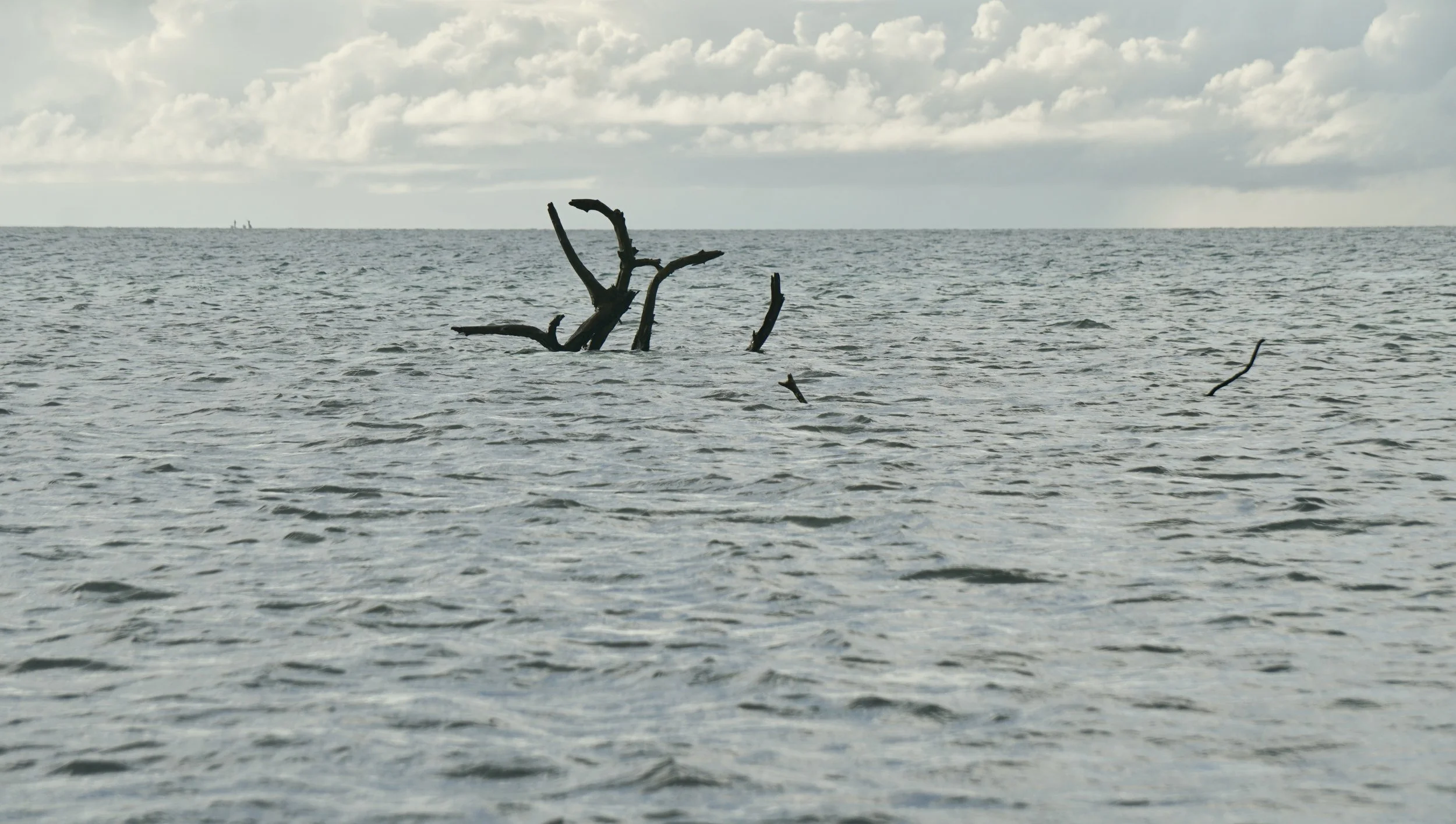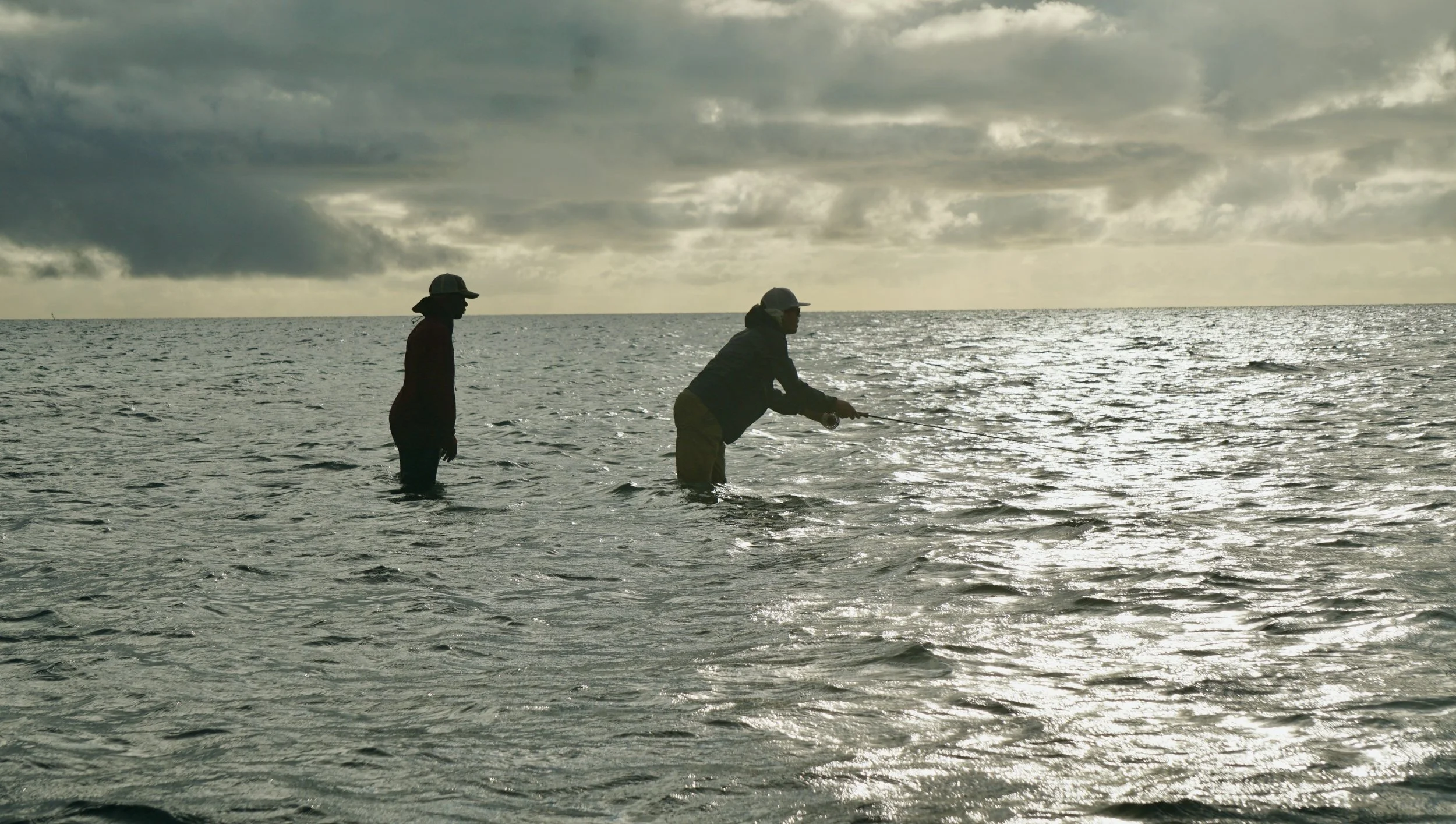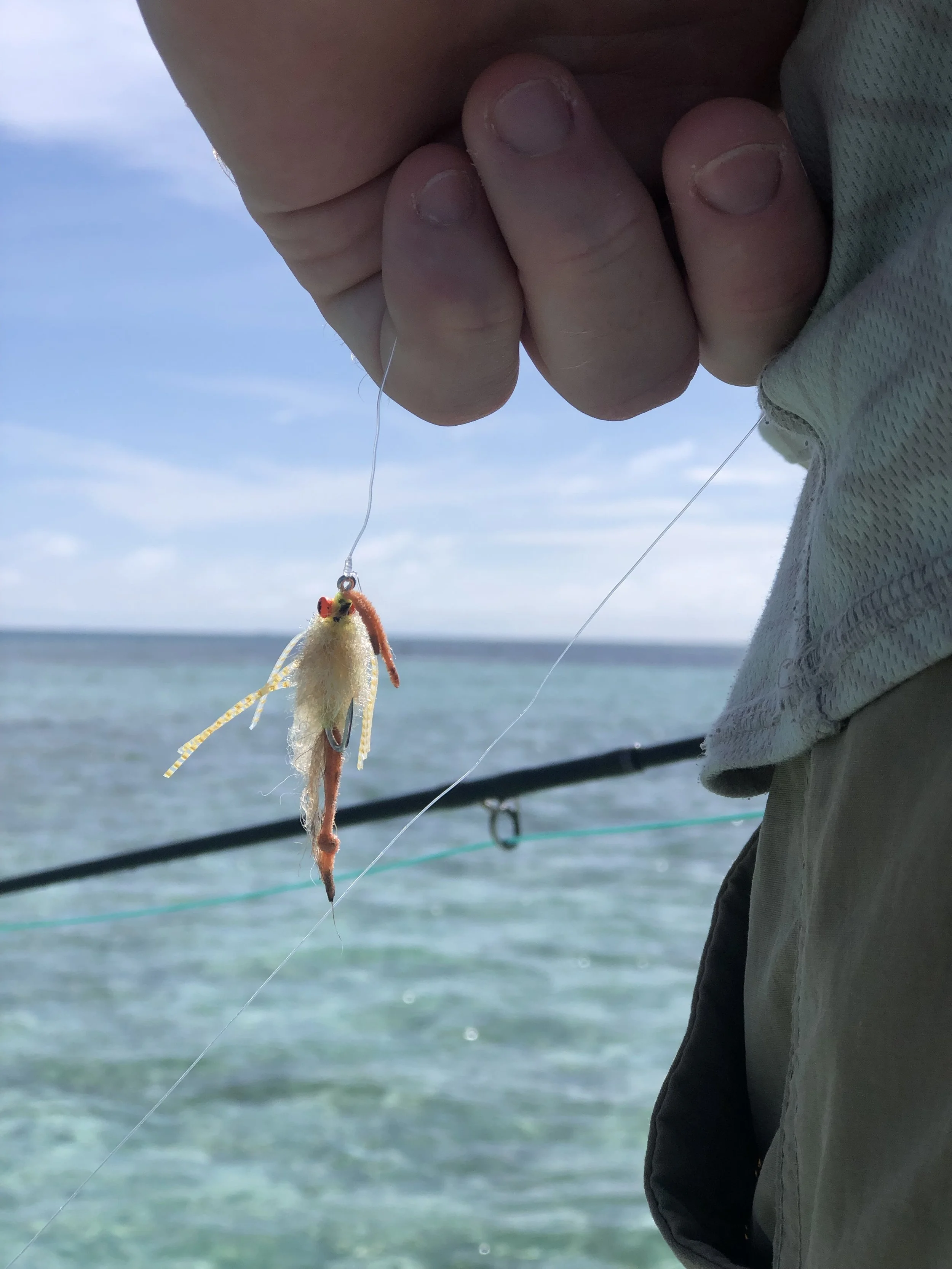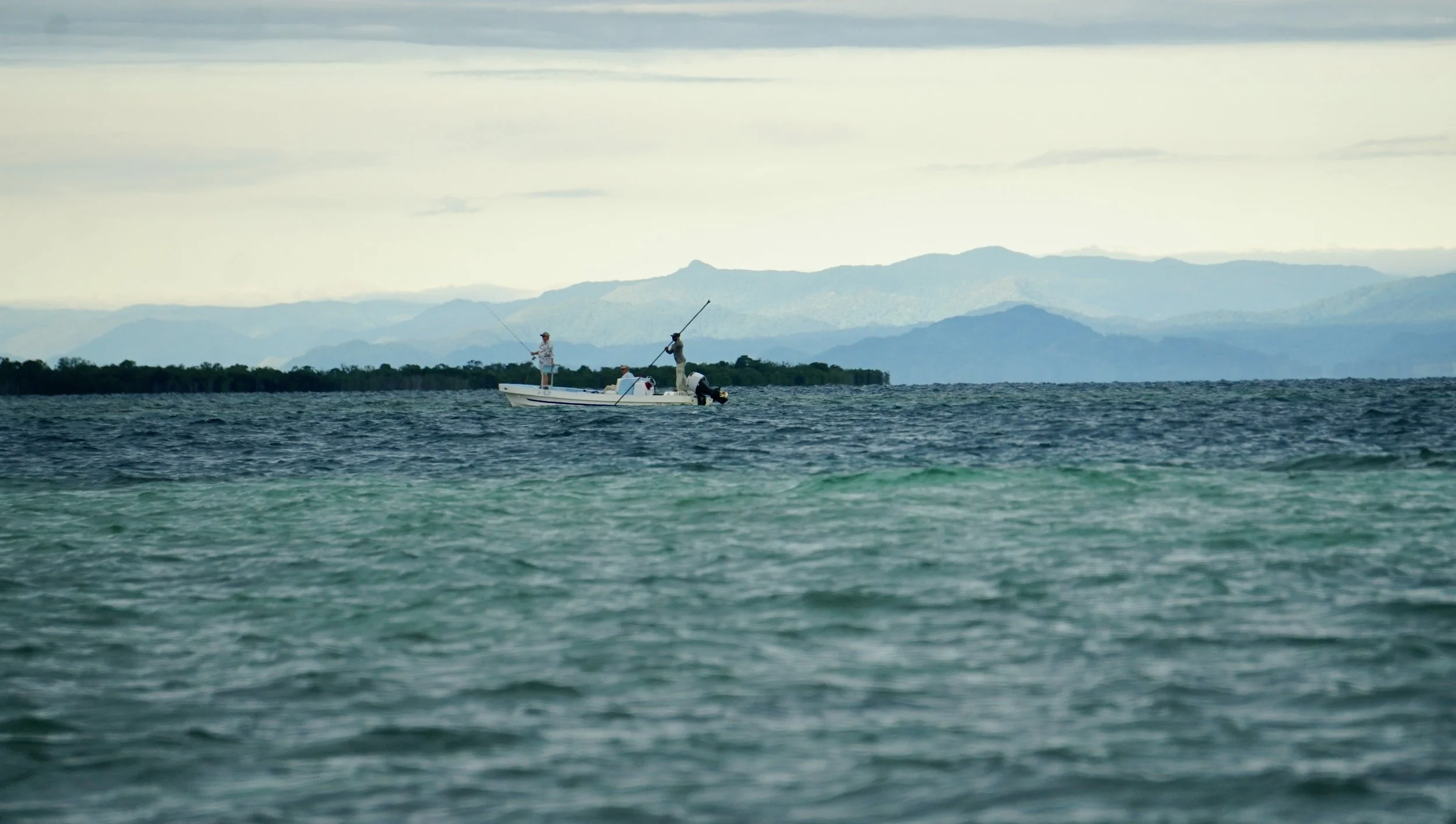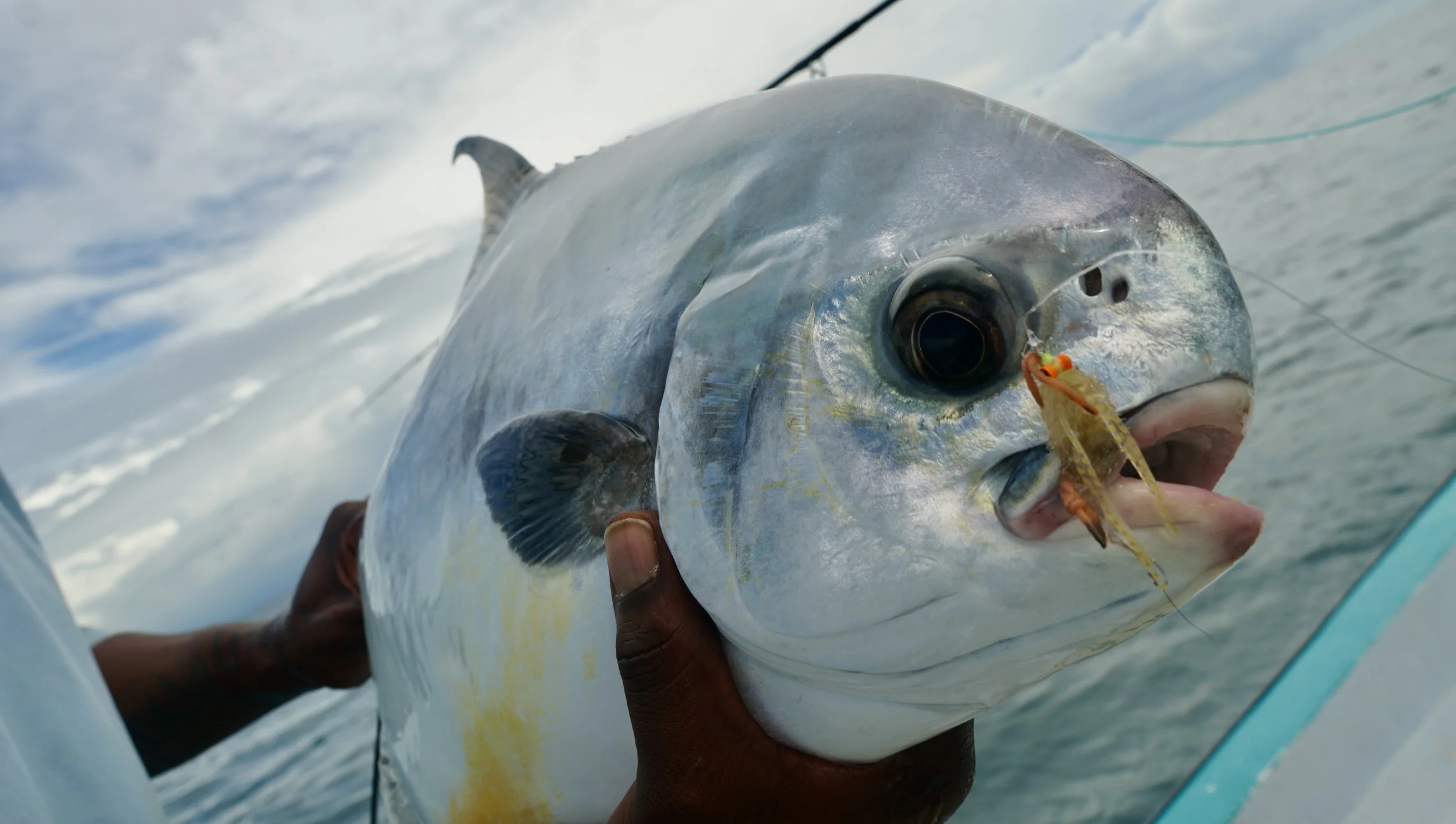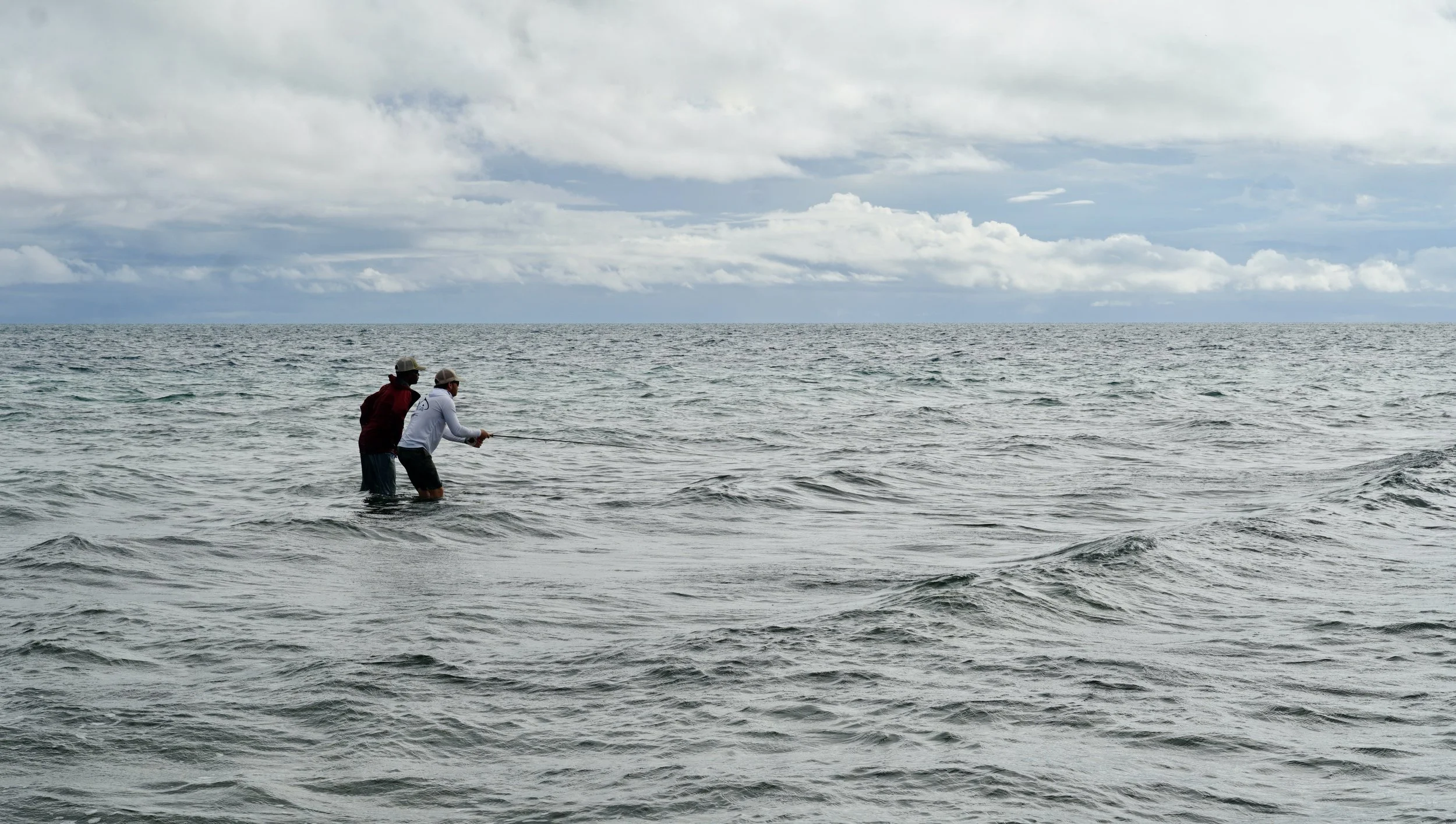There could never be a better shot at a Permit I thought. We motored first towards the flat, cutting the engine as the 23 foot panga cruised over the deep edge and into water shallow enough for an eight foot straightish pole to reach the bottom. The pole was a stick from the mainland that Lincoln had payed five dollars American for. You wouldn’t see this setup in the states, but this was southern Belize, and far from most amenities. As the panga drifted with the tide, we stared towards the gentle surf that rolled easily over the high turtle grass spot on the flat. The flats themselves were narrow strips of coral that rose from 60 feet of water or more, and it seemed the fish were always in certain and predictable areas. A spider-like shape of driftwood lay aground the high spot and to its side broke the waves. Each rolling one foot wave left a trail of whitewash that bubbled over the dark grass. The pair of fins were quickly apparent between the wave breaks. It was a Permit — allowing the tide to wash over its back.
We jumped from the boat (Kevon, our apprentice guide and myself) and walked carefully against the tide and across the coral bottom to get above the fish for a shot. “This was it,” I thought. We had all the time in the world it seemed after Kevon motioned to get even closer to the fish, still holding against the tide within 30 feet of us. I had plenty of line dragging in the current already to cast and carefully made two false casts and then dropped the fly. With tide running the other way, I swung my crab fly into the strike zone, letting the line come tight and stripping slowly with short pauses. The fly was somewhere within inches of the fish’s face. I made another cast, this time landing the fly two feet in front of the fish and waited to come tight. The moment was muddied with adrenaline, angst, and disbelief — all while a Permit’s back broke the surface in front of me. I made a third cast and presentation — this time sure that if he didn’t eat the fly I might accidentally foul hook the fish. Then his back slumped beneath a wave break. We waited to see the fish tail again, but it didn't — and with that, the best Permit shot you could ever get had come and gone.
Dakota’s Crab
This same scenario played out several times throughout our time in Belize. Some shots gave us enough time to change flies and even walk back to the boat to grab another rod with even lighter tippet. It was incredibly frustrating — making good casts and presentations to get flies in front of so many Permit without them eating the fly. But we also learned a lot.
Later each day, we discussed our shots with other guides and the lodge manager, all of whom log hundreds of hours with these fish each year. The described this same shot as being difficult because our overcast weather makes their cone of awareness much smaller and thus more wary of food and flies then they might be on a sunny high pressure day. They also aren’t actively seeking food and so don’t respond as well to a crab or a shrimp fly. Many more theories were presented and argued over and then resolved under the common certainty that these fish are an enigma. As much as we know, we don’t know anything. This idea was evidenced no better than through our guide, Lincoln Westby. Lincoln has guided to over two thousand Permit landed and even he can’t always articulate what they’re thinking — but he does seemingly know every fish in the scattered cays and coral ridges that lay east of his home in Hopkins. He notices the same fish on certain flats, in certain places on that flat, and in certain tidal periods. He even mentioned certain fish that he hasn't caught in over a decade and knows it’s that same fish. The story of the White Whale comes to mind when you talk to Lincoln about Permit on certain flats.
To my brother and I, it seemed that those wading shots at tailing fish in the surf were definitely the most frustrating of shots. The fish was there and there was no doubt which direction he was looking, how fast he was moving, how the tide would affect the retrieve, and even how long the cast would have to be (it was short). We tried both several crab flies and Mantis shrimp imitations. We tried bead chain eyes and small dumbbell eyes. We tried chenille claws and hackle claws, rabbit strips and rigid profiles — nothing could gain enough interest to get the Permit to eat. But what if they were eating something else. The fish acted almost like trout in a stream — seining smaller food items that required only opening their mouth. These other food sources could be crab and shrimp larvae or worms or even Urchins. Then we learned that there are species of Urchins in that part of the Caribbean that colored tan and green and ran small. One theory why the Bauer’s flats crab was so successful in that part of the region was because it was tired to resemble a crab, but it also resembled this species of Urchin. Anglers with toast success also mentioned this same tactic of slow swinging lightly weighted Urchin flies to Permit holding against the current.
Success
The theories abound endlessly with Permit and why they don ‘t eat flies like other fish, or at all sometimes. But they do provide ample opportunities to dwell after Caribbean fishing trips and plenty of time to tie new flies for the next trip. I’ll be tying some Urchin flies for the next trip no doubt.
Looking into the wash
The next River Range Adventures trip is set for the Bay Islands off Honduras this spring. Fortune favors the bold.
#RiverRangeAdventures
#wherethewildstillholdsdominion

